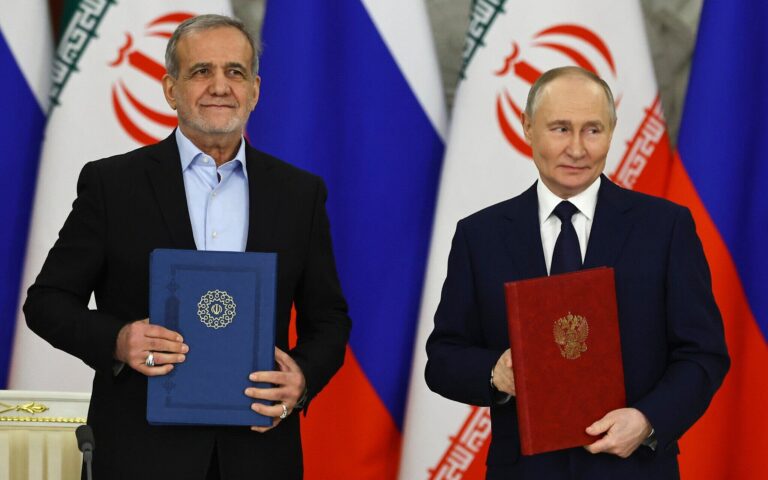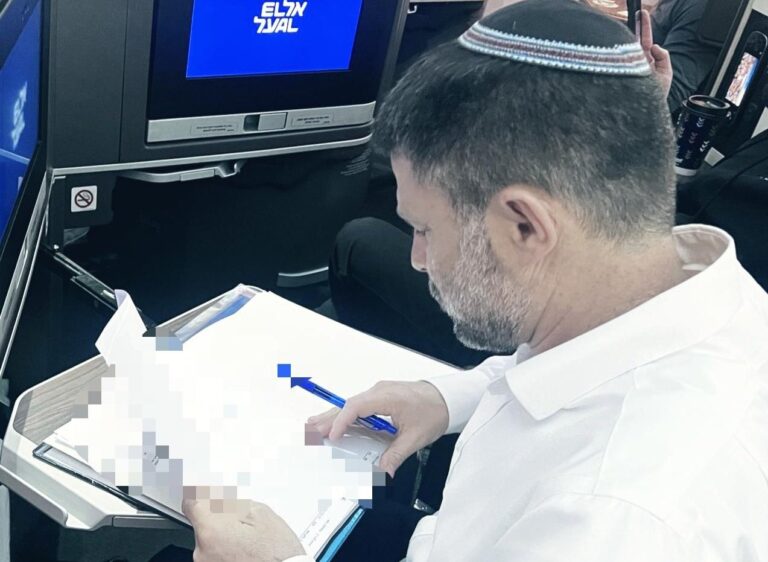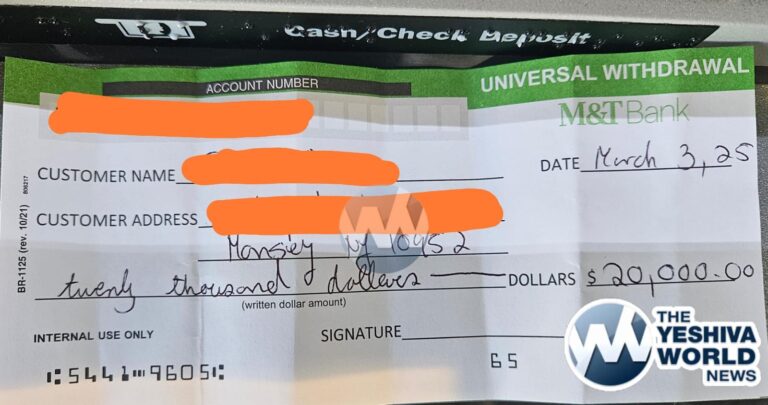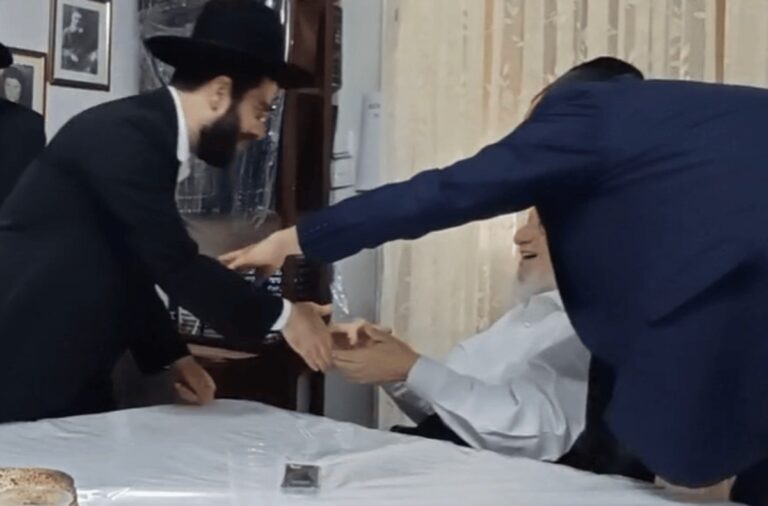Adam ki yakriv mikem korban l’Hashem (1:2)
Sefer Bereishis discusses the creation of the universe and the formation of the Jewish people. The book of Shemos continues to recount their national development, detailing the Exodus from Egypt and the giving of the Torah at Mount Sinai. Whereas these first two books of the Torah consist of a logical and straightforward historical narrative, Sefer Vayikra seems to be comprised of a number of disparate topics which at first glance appear to lack a unifying theme. What could be the common thread connecting portions which discuss the laws of offering sacrifices, the various types of ritual impurities, the Yom Kippur service, the laws governing Kohanim, and the Yomim Tovim?
The Shelah HaKadosh explains that Hashem’s original plan for the world was that there would be no inherent spiritual differences between places, people, and times. In other words, if not for the sin of Adam eating from the forbidden fruit, every place in the world would be like the Garden of Eden and would be uniformly holy. All people would be equally holy. There would be no distinctions between different dates and times, just as Chazal refer to the Messianic era as a time which will always be Shabbos (Tamid 33b). Additionally, there would be no need to offer animals as sacrifices to come closer to Hashem, as people would be on such lofty spiritual levels that they themselves would be the offerings, just as Chazal teach that after the death of the righteous, their souls are offered on the Heavenly altar (Tur Orach Chaim 120).
Unfortunately, due to the actions of Adam, this is not what happened. The book of Vayikra revolves around the theme of describing the post-sin world in which we live. Instead of place, man, and time being equal, it contains the laws governing the Beis HaMikdash – the holiest place on earth – where the Divine service is performed by Kohanim, whom we are commanded to sanctify, as well as the various Yomim Tovim, times of the year which possess additional holiness.
Sefer Vayikra begins with the concept that as a result of Adam’s sin, we are now required to bring various offerings to Hashem. This is alluded to by the fact that the Torah introduces the laws of the sacrifices by using the word “Adam” to refer to a person who brings an offering to Hashem. Literally, this is a generic term for a person, but it also hints that this concept only exists due to the sin of Adam and that the book of Vayikra is intended as a rectification for its consequences.
The Torah then discusses the different types of ritual impurity and their sources, such as tzara’as and childbirth, which only exist due to Adam’s sin. This is followed by the laws governing Yom Kippur, the day which provides annual atonement and forgiveness for our sins, a concept which became necessary after Adam introduced sin to a previously unblemished world. After this comes the idea of sanctity, first through the commandment to be holy (19:2), then by the requirement to sanctify the lofty and elevated Kohanim (21:8), and finally by the Biblical festivals, each of which possesses its own unique spiritual energy.
This is followed by the mitzvah of Shemittah, which requires us to allow the ground to rest every seven years, corresponding to the seven days of Creation which were corrupted by Adam. Finally, Sefer Vayikra concludes with the blessings and curses in Parshas Bechukosai which encourage us to rectify Adam’s sin by following the Torah’s prescription for holiness and spiritual elevation.
V’lo yada v’asheim (5:17)
A number of commentators are troubled by the fact that the sacrifice prescribed by the Torah for somebody unsure whether he transgressed, such as a person who ate one of two pieces of meat and subsequently learned that one of them wasn’t kosher, is significantly more expensive than that required of a person who knows with certainty that he sinned. Wouldn’t logic seem to dictate that the opposite would be more appropriate?
The following story will help shed light on this conundrum. The Mir yeshiva spent much of World War 2 in exile in Shanghai. Aware of the dangers faced by their families and friends, the daily prayers were intense. The prayers during the Yomim Noraim were powerful beyond words. One year in the middle of the Rosh Hashana prayers, one of the students walked out, only to return minutes later wearing a different outfit. At the conclusion of the prayer services, his friends inquired about his peculiar behavior. He explained that he had been trying his utmost to pray with the concentration appropriate for the Day of Judgment, but try as he might, he felt that his prayers weren’t coming out properly.
He remembered that the mystics write that wearing shatnez can prevent a person’s prayers from being accepted. He realized that the new suit he had received for Yom Tov had never been tested for shatnez. Suspecting it as the culprit, he returned to his room to change into his weekday suit and noticed a marked improvement in his prayers. After the holiday concluded, his new suit was checked and found to contain shatnez, just as he had suspected.
In light of this story, we can understand the answer to our question given by the Chasam Sofer. If the smallest bit of dirt falls onto a bride’s pure white gown, it will be easily detected and removed. If, on the other hand, it falls onto an already filthy garment, it will be difficult to locate because it will blend in with the numerous stains which preceded it. Similarly, if a righteous person needs to find out if he has sinned, he will be able to clarify the matter by simply checking his pure neshama to see if it has been sullied, just as the student in Shanghai was on such a high level that he was able to detect the problem with his suit. If he finds a “stain” on his soul, he will realize that he has sinned and will bring the offering of a person who knows that he has transgressed. If he finds no stain, he won’t have to bring any sacrifice. Either way, he will never be in doubt.
If a person is in doubt and is unable to recognize whether or not he sinned, as in the case of a person who finds out that he may have consumed a non-kosher piece of meat, it must be that his originally pristine soul has been repeatedly stained through his prior transgressions. It is for arriving at this pitiful spiritual state through his previous sins that the Torah requires such an expensive sacrifice to effect his atonement.
Although reaching this lofty level may be beyond our grasp, this lesson is still relevant to each of us. We live in a physical world and are surrounded by a society which emphasizes its ephemeral pleasures. At times of personal trials, we should remember that Hashem sent us to this world to guard and purify our Heavenly neshamos. This recognition can help give us the strength to remain strong and keep our souls clean and pure.
Answers to the weekly Points to Ponder are now available!
To receive the full version with answers email the author at [email protected].
Parsha Points to Ponder (and sources which discuss them):
Rashi writes (1:1) that when Hashem spoke to Moshe in the Mishkan, He spoke in His customarily powerful voice. As Rashi writes that only Moshe was capable of hearing it, what was the purpose of speaking in such a strong voice? (Darkei Mussar, Darash Moshe)
The Baal HaTurim explains (1:1) that the letter “aleph” in the word “Vayikra” is written smaller than usual due to Moshe’s humility. He preferred to use the expression “Vayikar,” which connotes coincidental contact. When Hashem instructed Moshe to write “Vayikra,” he wrote a small letter “aleph.” As the word “Vayikra” is used in conjunction with Hashem speaking to Moshe several times previously (e.g. Shemos 3:4), why did he only write a small “aleph” here? (Peninim MiShulchan Gevoha, Even Meira)
The Medrash teaches (Vayikra Rabbah 7:3) that in the absence of the Beis HaMikdash, one who recites and studies the laws of the sacrifices will be considered in Hashem’s eyes as if he actually brought them. Does this principle mean that the study of the laws of any mitzvah is considered tantamount to fulfilling it, or is this concept unique to the study of the laws of sacrifices? (Rashi Bava Metzia 114b, Kiryat Sefer Hakdamah 7:2, Ohr HaChaim HaKadosh 26:3, Torah Ohr 2)
In Parshas HaChodesh, Hashem gave the first mitzvah to the Jewish nation (Shemos 12:2), that of sanctifying the new moon. Although we are unable to do this mitzvah today, we commemorate it by reciting Kiddush Levana. Why isn’t the Shehechiyanu blessing said when performing this mitzvah each month? (Eliyah Rabbah Orach Chaim 426:1, Shu”t K’sav Sofer Orach Chaim 34)
© 2012 by Oizer Alport.










